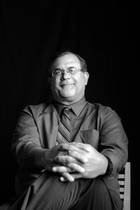
Richard N. Velotta
Organizers of the International CES did a great thing by scheduling a press day at the Mandalay Bay Convention Center this year.
Scheduling the all-day event at Mandalay Bay was huge. Participants didn’t have to pay for parking. The lots around the Las Vegas Convention Center are pretty pricey during CES.
Savvy show attendees usually do what I do — park for free at the MGM Grand and take the Las Vegas Monorail over to the Convention Center or LVH.
Luckily for me, I’ve been to Mandalay Bay a few times and know where to park and walk to get exactly where I need to be.
I arrived to press day about 10 minutes before the start of the news conference I was there to cover. I was in great shape. I wasn’t even that worried to see a long line to get into the event.
But as I neared the ballroom, I noticed a backwash of people reversing course.
Bad news: The room was full. No one else was being allowed into the ballroom. Everybody was turned away and told not to wait because they wouldn’t be allowed in.
No worries, I thought. This is a technology event. The company certainly would stream the presentation online.
Nope. CES had planned a full slate of events that day, and this one was destined to be a wipeout.
I warned other reporters to get to CES events early. My colleague Ron Sylvester, attending the conference for the first time, arrived to a 9 a.m. event the next day at 7:30 a.m., and a line already had formed.
Our experiences illustrate one of the problems with CES — and one of the reasons some tech industry leaders have questioned the value of the city’s largest convention: It has gotten too big.
The show drew between 150,000 and 160,000 people. It’s easy for big tech companies to rent rooms and pay the sponsorship dollars that allow them to make keynote addresses. But for most of the 3,000 companies exhibiting, it’s a competition for eyeballs.
More than 5,000 reporters registered for this year’s show. Weeks before CES, my email inbox was flooded with messages requesting personal meetings with vendors for product demonstrations. I didn’t open most of them. With so many reporters on the scene, I knew there would be few scoops and little personal attention.
What started as a murmur last year got shouted this year: Isn’t there a better way to introduce products?
Microsoft reduced its presence at CES and decided not to present the pre-show keynote. Qualcomm filled the void but left some critics doubting whether the company could fill Microsoft’s shoes. Everybody wants to hear Bill Gates. But Paul Jacobs? Not so much.
Most industry officials also aren’t enamored with the dates of the show. They prefer to do big product rollouts in advance of the winter holidays, not right after them.
So, will CES survive? Can the Consumer Electronics Association figure out a way to keep the show compelling? Will this big economic driver for Las Vegas go the way of Comdex in the 1990s?
Many Las Vegans are counting on CES working through its growing pains.
If it does, I promise to get to press conferences a little earlier.